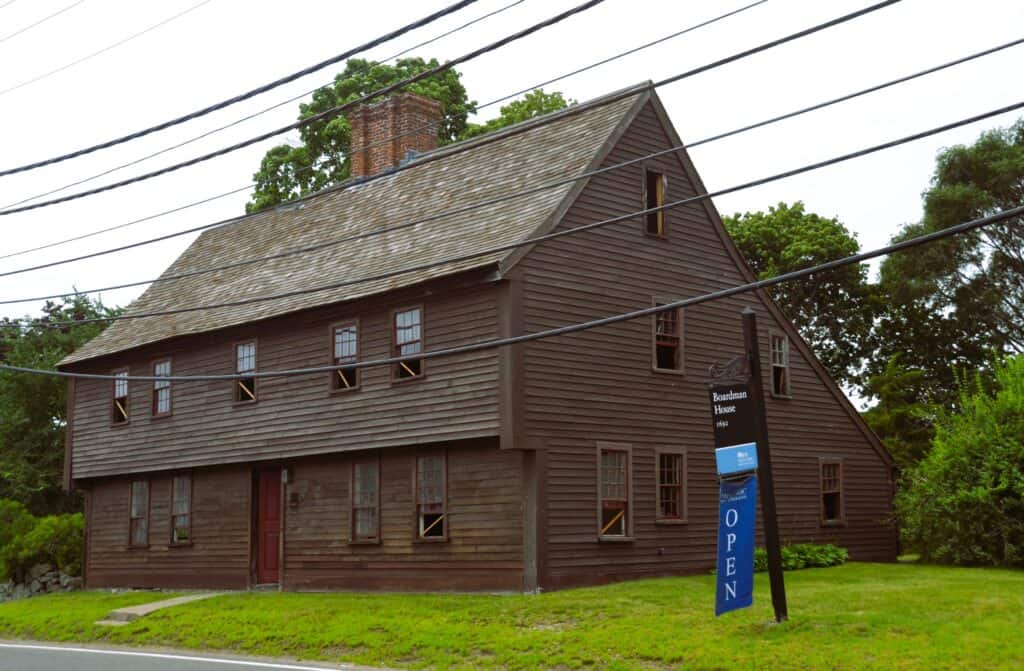(Editor’s Note: Historic New England issued the following press release this week.)
Join Historic New England on July 14 for the 2nd Annual Boardman House Community Day! With lightning talks from Historic New England staff, dive into the history, preservation, and climate awareness that it takes to keep preserving this 1692 gem. Learn more about historic and environmental resources in the area from Saugus Action Volunteers for the Environment (SAVE) and the Saugus Historical Society. At this free event, you can enjoy house tours, explore at your own pace, and try your hand at some family-friendly lawn games!
At Boardman House (17 Howard Street), take a step back in time. One of the earliest houses acquired by Historic New England, Boardman House has original 17th and 18th Century architectural features and offers a story of unbroken family history for over 300 years.
This house was built in 1692 for William Boardman III and his family. The household also included an enslaved person named Mark. While William Boardman himself only lived a few more years after moving here, his descendants lived in the home until 1911. In 1914 the preservationist William Sumner Appleton acquired it for the Society for Preservation of New England Antiquities (SPNEA), now known as Historic New England.
This free event is from noon to 3:00 p.m.
For more information on Historic New England, visit HistoricNewEngland.org or call 978-377-7459.
About Historic New England
Historic New England is the oldest, largest, and most comprehensive regional heritage organization in the nation. We bring history to life while preserving the past for everyone interested in exploring the authentic New England experience from the seventeenth century to today. Historic New England owns and operates thirty-six historic homes and landscapes spanning five states. The organization shares the region’s history through vast collections, publications, public programs, museum properties, archives, and family stories that document more than 400 years of life in New England. For more information visit www.HistoricNewEngland.org


